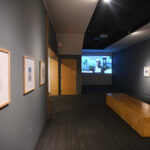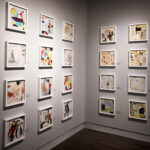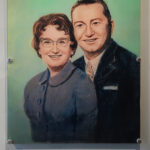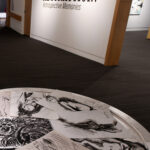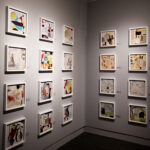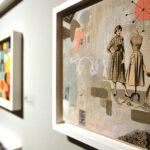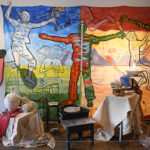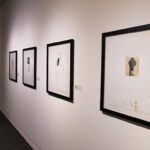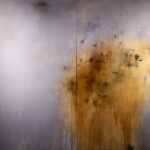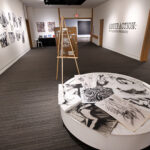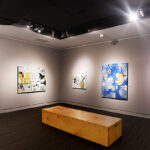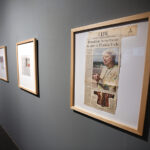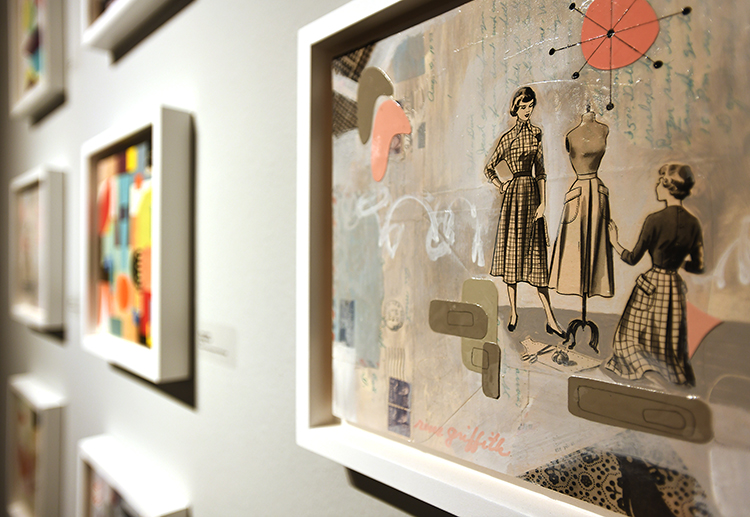
“Abstraction: Retrospective Memories” is the final exhibition of the Foosaner Art Museum in Melbourne before it closes permanently on June 30. The show features recent works by two Brevard County abstract painters: Rene Griffith and Steven Seinberg.
The museum and its Renee Foosaner Education Center, both of which merged with Florida Institute of Technology on July 1, 2011, were abruptly “closed” by the technical school’s trustees not quite seven years later in 2018. The Foosaner’s lease on life was extended, however, when the trustees were reminded of a contractual agreement between FIT and the Foosaner Foundation.
That now defunct foundation, which had provided funding for the arts in Brevard County for 30 years, made its final donation of $1 million to FIT not long after the school’s acquisition of the museum.
Among the gift’s donor-imposed restrictions was that the school manage the Foosaner’s art and education programs for a specified length of time. June 30 is the last day in the FIT financial year and is the eve of FIT’s 10-year anniversary of its acquisition of the museum.
The developer who now owns the properties will take possession on July 1. It is expected that the buildings will be razed soon thereafter.
The person overseeing the museum’s final days is its current director, Ashley Milliken, who graduated in 2018 from the University of North Carolina at Charlotte with a B.A. in art history. Milliken has been with the museum since May 2019, first as an education assistant, and then as a full-time administrative assistant. She was tapped to fill the director’s chair at the Foosaner last August, after Carla Funk stepped down from her position as executive director and chief curator of university museums for FIT.
On April 9 Milliken acted as my tour guide for “Abstraction: Retrospective Memories.” She is bright and upbeat, and beams as she speaks about the exhibition, its art and its artists.
“The whole idea of the invitational was that we are honoring the 40-plus years of Foosaner, the history of the Brevard art community being the heart of it,” says Milliken.
“We have the solemn, mysterious work of Steve Seinberg that gets you into a mood that’s happy, but also a little sad. And then you see Rene, and she represents that art is exploding, art is never going to end, art is here, and it will continue, even if the museum is not here.”
The exhibition had initially been planned by Funk to include works from the Foosaner’s permanent collection, along with works by Seinberg, says Milliken.
“Originally, when Carla was planning the exhibition, we weren’t, um, fully prepared to close.
Obviously, we had to make some changes.”
The day of my visit to the Foosaner, Florida Today reported that FIT “is finalizing the transfer of the permanent collections from the Foosaner Art Museum and the Funk Center for Textile Arts to the Appleton Museum of Art at the College of Central Florida in Ocala.”
Milliken says that when I arrived for my visit a few minutes early, she was busy packing things up for the move.
“Because we are in the process of transferring the collection to the Appleton Museum, we decided to do the retrospective portion, instead of the permanent collection one,” says Milliken.
The ‘retrospective memories’ in the title of the current show may refer to the Foosaner’s current mini-retrospective of its 40 years as an institution. That exhibition includes a display of art materials, sketchbooks and pottery in the museum’s central hallway, and a wall filled with photos of artists, teachers, staff and students from the education center’s history.
The two little galleries to the west of the hallway contain photos and printed memorabilia from the Foosaner’s role as a collecting museum and center of visual cultural In Melbourne, as well news clippings and exhibition announcement cards from the Ruth Funk Center for Textile Art’s 14-year run. That museum was abruptly shut down by the FIT last year.
Says Milliken, “We have pictures of past directors and patrons. Pretty much these highlight the artists, instructors, students, docents, volunteers, pretty much anyone and everyone we could.”
The main attraction of the museum’s swan song is the exhibition of the mixed-media collage paintings of Griffith and the oil on paper and canvas paintings of Seinberg.
It was up to Milliken to choose an artist to show along with Seinberg in the main gallery, and her pick, Rene (rhymes with “beanie”) Griffith, a longtime resident of the area, was a good one. Born in Panama’s Canal Zone to a member of the U.S. Air Force and a Panamanian, Griffith grew up in the then-town of Eau Gallie with her seven siblings. In the mid-1990s she embarked on a 10-year sojourn to San Francisco, where she developed her artistic talent.
When she returned to the Melbourne area in 2006, she became known for her creative work in Polaroid photography as well as collage and painting.
Milliken was first introduced to Griffith’s work in the Foosaner’s penultimate exhibition, “Robot Love V,” which ran from Jan. 15 through February. As the clock ticked down to the opening of “Abstraction: Retrospective Memories,” Millikin needed a second artist to fill up the Foosaner’s spacious main gallery, fast.
Says Milliken, “I saw her work and said, ‘Hey, I’m looking to do an abstract contemporary show at the end, would you like to be the second artist that I get to show off and highlight?’”
Griffith was all for it, says Milliken, and made a series of four works especially for the show.
Part of the artist’s continuing “Inner Landscape” series, the collage paintings are titled “Down Memory Lane,” ”Life Patterns,” “Love is Blue” and “For the Love of Books.”
Each painting treats Griffith’s experiences of love and loss. These include admiration for her late parents; her mother Sara’s skill at sewing; and her father Louis’ love of reading. While she represents all her siblings in the series, one canvas, “Love is Blue,” memorializes the loss of her brothers, Billy, aged 13, to a drunk driver and, in a separate incident, Jimbo, aged 19, to a hit-and-run driver.
It would be hard to guess at these elegant paintings’ personal content without the help of the wall labels that provide Griffith’s interpretation of the collaged-on photos, vintage ads and wallpaper scraps that she has embedded in the layered, white-painted surfaces.
Walking around the partial wall that bifurcates the gallery, we move from Griffith’s colorfully nostalgic oeuvre to the philosophic naturalism of Seinberg’s paintings. The Brooklyn-born, Georgia-educated artist is represented by galleries scattered across the U.S. Seinberg has lived in Indialantic for the past five or six years, Milliken says. Prior to that he made North Carolina his home for some 15 years.
Explains Milliken, “Rene’s works are more additive, and Steve’s are more subtractive.”
To say the least. Seinberg’s sparse compositions are Gregorian chants compared to Griffith’s top 40, “wall of sound” sensibilities.
In the tradition of less is more, Seinberg’s art is composed of a few elements – fuzzy circles and ellipses, crosses, lines – set atop the drone-like harmony of his pea-soup gray washes.
To see one of his paintings is to stand and take in the vibrations, allow the warm fog to envelop you. To keep you grounded to the here and now, however, Seinberg’s drawn-on details are syncopated rhythms atop a sea of white noise or, more gratingly, the grind of a pointed stick dragged along a sidewalk.
Seinberg’s 2021 diptych “Lagoon” illustrates this. It features an environment of cool gray fog that parts on the composition’s right side to reveal a drippy, brownish-yellow stain. That amber region is punctuated by a swarm of small square crosses; at its top, a few of these disappear into the surrounding haze.
Seinberg has said that water, the way it can seep into, crawl across or inundate the landscape, inspires his work. “Lagoon” could be a stain of sunlight on an overcast sky, or a blackwater stream bleeding into the Indian River. It could be something else, too. It depends on how you feel about it.
No matter how you feel about the death of the Foosaner Art Museum, see this final show. It is a brave elegy for a Melbourne institution.
Photos by Brenda Ahearn

